Related Research Articles
Hawaiian is a Polynesian language of the Austronesian language family that takes its name from Hawaiʻi, the largest island in the tropical North Pacific archipelago where it developed. Hawaiian, along with English, is an official language of the US state of Hawaii. King Kamehameha III established the first Hawaiian-language constitution in 1839 and 1840.
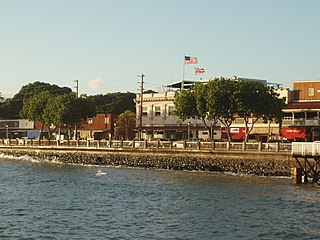
Lahaina is the largest census-designated place (CDP) in West Maui, Maui County, Hawaii, United States and includes the Kaanapali and Kapalua beach resorts. As of the 2020 census, the CDP had a resident population of 12,702. Lahaina encompasses the coast along Hawaii Route 30 from a tunnel at the south end, through Olowalu and to the CDP of Napili-Honokowai to the north. During the tourist season, the population can swell to nearly 40,000 people.

Kamehameha II was the second king of the Kingdom of Hawaii. His birth name was Liholiho and full name was Kalaninui kua Liholiho i ke kapu ʻIolani. It was lengthened to Kalani Kaleiʻaimoku o Kaiwikapu o Laʻamea i Kauikawekiu Ahilapalapa Kealiʻi Kauinamoku o Kahekili Kalaninui i Mamao ʻIolani i Ka Liholiho when he took the throne.
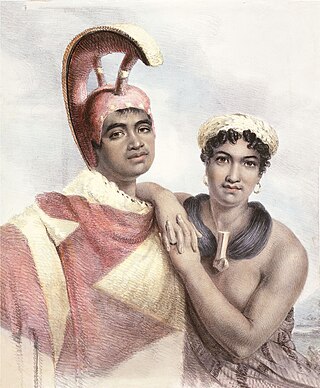
Kuini Liliha was a High Chiefess (aliʻi) and noblewoman who served the Kingdom of Hawaii as royal governor of Oʻahu island. She administered the island from 1829 to 1831 following the death of her husband Boki.

Joseph James Fern was the first Mayor of Honolulu from 1909 to 1915 and again from 1917 to 1920. During and after his tenure, Fern became one of the most beloved political figures in the Territory of Hawaii. He was one of the first members of the Hawai'i Democratic Party.

The Makahiki season is the ancient Hawaiian New Year festival, in honor of the god Lono of the Hawaiian religion.

Kamaʻāina is a word describing Hawaii residents regardless of their racial background, as opposed to kanaka which means a person of Native Hawaiian ancestry. A kamaʻāina may be considered to be someone who lives in Hawaii, or may be expanded to include people who once lived there but have moved away.

Kalihi is a neighborhood of Honolulu on the island of Oʻahu in Hawaiʻi, United States. Split by the Likelike Highway, it is flanked by downtown Honolulu to the east and Mapunapuna, Moanalua and Salt Lake to the west.
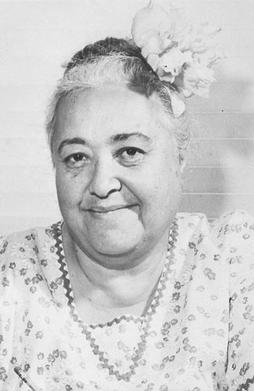
Mary Abigail Kawenaʻulaokalaniahiʻiakaikapoliopele Naleilehuaapele Wiggin Pukui, known as Kawena, was a Hawaiian scholar, author, composer, hula expert, and educator.
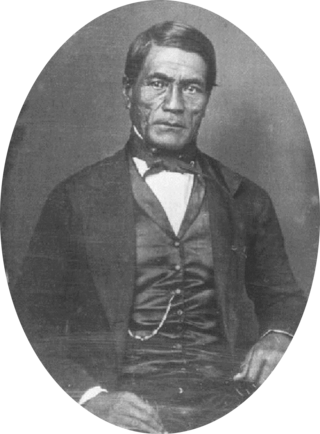
John (Ioane) Kaneiakama Papa ʻĪʻī (1800–1870) was a 19th-century educator, politician and historian in the Kingdom of Hawaii.

Hawaiian religion refers to the indigenous religious beliefs and practices of native Hawaiians, also known as the kapu system. Hawaiian religion is based largely on the tapu religion common in Polynesia and likely originated among the Tahitians and other Pacific islanders who landed in Hawaiʻi between 500 and 1300 AD. It is polytheistic and animistic, with a belief in many deities and spirits, including the belief that spirits are found in non-human beings and objects such as other animals, the waves, and the sky. It was only during the reign of Kamehameha I that a ruler from Hawaii island attempted to impose a singular "Hawaiian" religion on all the Hawaiian islands that was not Christianity.

Kinoʻoleoliliha Pitman, also written as Kinoole-o-Liliha, was a high chiefess in the Kingdom of Hawaii. She was known as Mrs. Pitman after her marriage. In the Hawaiian language, kino 'ole means "thin" and liliha can mean "heartsick".

Hoʻolulu (1794–1844) was a member of the nobility during the formation of the Kingdom of Hawaii. He was a trusted advisor to King Kamehameha I, also known as "Kamehameha the Great", and was one of the select few to know his secret resting place. His descendants continue the tradition of guarding royal burials. A major cultural site in Hilo, Hawaii is named after him.
Kepoʻokalani was a High Chief during the founding of the Kingdom of Hawaii. Two of his grandchildren would marry each other, and two of his great-grandchildren would be the last two ruling monarchs of the Kingdom.

Jonathan Smith Green was a missionary from New England to the Kingdom of Hawaii.

Peleuli, formally Peleuli-i-Kekela-o-kalani, was a Queen consort of the Kingdom of Hawaii as a wife of king Kamehameha I.
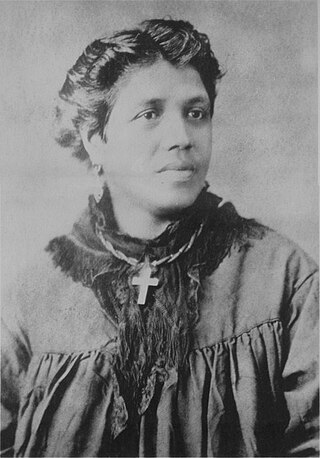
Miriam Auhea Kekāuluohi Crowningburg Kamai was a Hawaiian high chiefess (aliʻi) during the Hawaiian Kingdom. She was a cousin of King Lunalilo and namesake of his mother Kekāuluohi who ruled as Kuhina Nui (premier) under Kamehameha III.

George Charles Beckley was an English captain, trader, and military adviser. He was one of the earliest foreigners to have a major impact in the Kingdom of Hawaii, where he eventually became a noble, and was one of the disputed creators of the Flag of Hawaii.
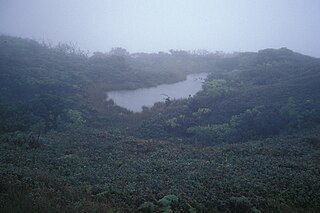
Violet Lake, is a small high-elevation lake located at 5,020 ft (1,530 m) above sea level on Mauna Kahalawai, situated in the western part of the island of Maui. It is located in the boggy slopes near the ʻEke Crater and Puʻu Kukui, the highest peak of the West Maui Mountains. It is approximately 10 ft × 20 ft in size.
ʻEhu was an ancient Hawaiian nobleman (Aliʻi) and the Chief of Kona.
References
- ↑ "Piʻilani's family". Archived from the original on 2015-03-04. Retrieved 2015-07-18.
- ↑ David Malo (1951). Hawaiian Antiquities. Honolulu: Bishop Museum Press.
- ↑ "Kamalalawalu (Kama-lala-walu) (Mo'i, Ruler of Maui)". Archived from the original on 2014-05-03. Retrieved 2015-07-18.
- ↑ Pukui, Mary (ed.). Fragments of Genealogy. Kalihi Ward, Honolulu, Hawaii. "Fragments of Genealogy" is a collection of genealogies gathered on Lanai by Mary Kawena Pukui.: Unpublished, handtyped manuscript (binder), LDS Family History Center (Kalihi), The Church of Jesus Christ of Latter-day Saints.
- ↑ Kamakau, Samuel (1992). Ruling Chiefs of Hawaii. Honolulu: Kamehameha Schools Press. ISBN 0-87336-014-1.